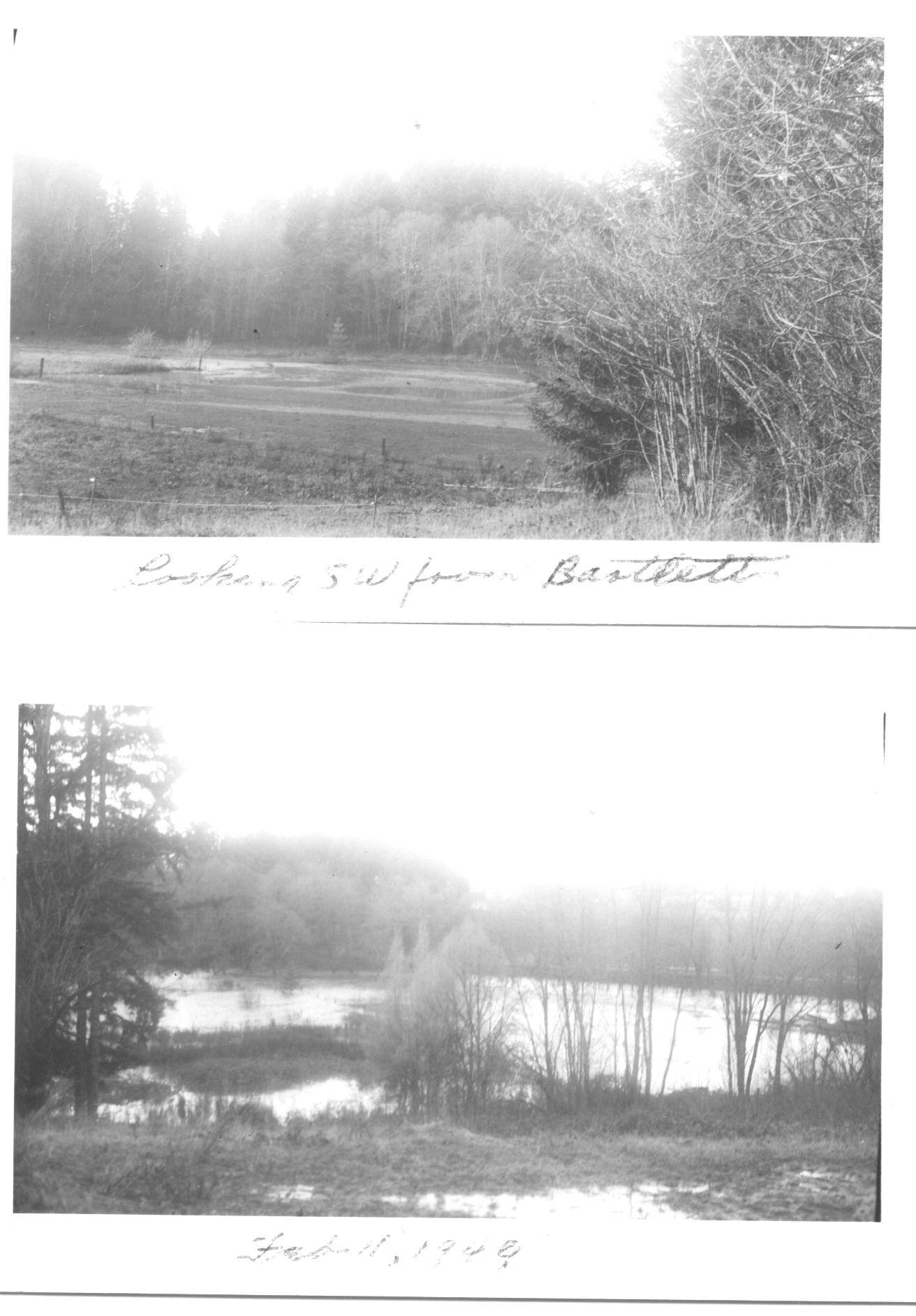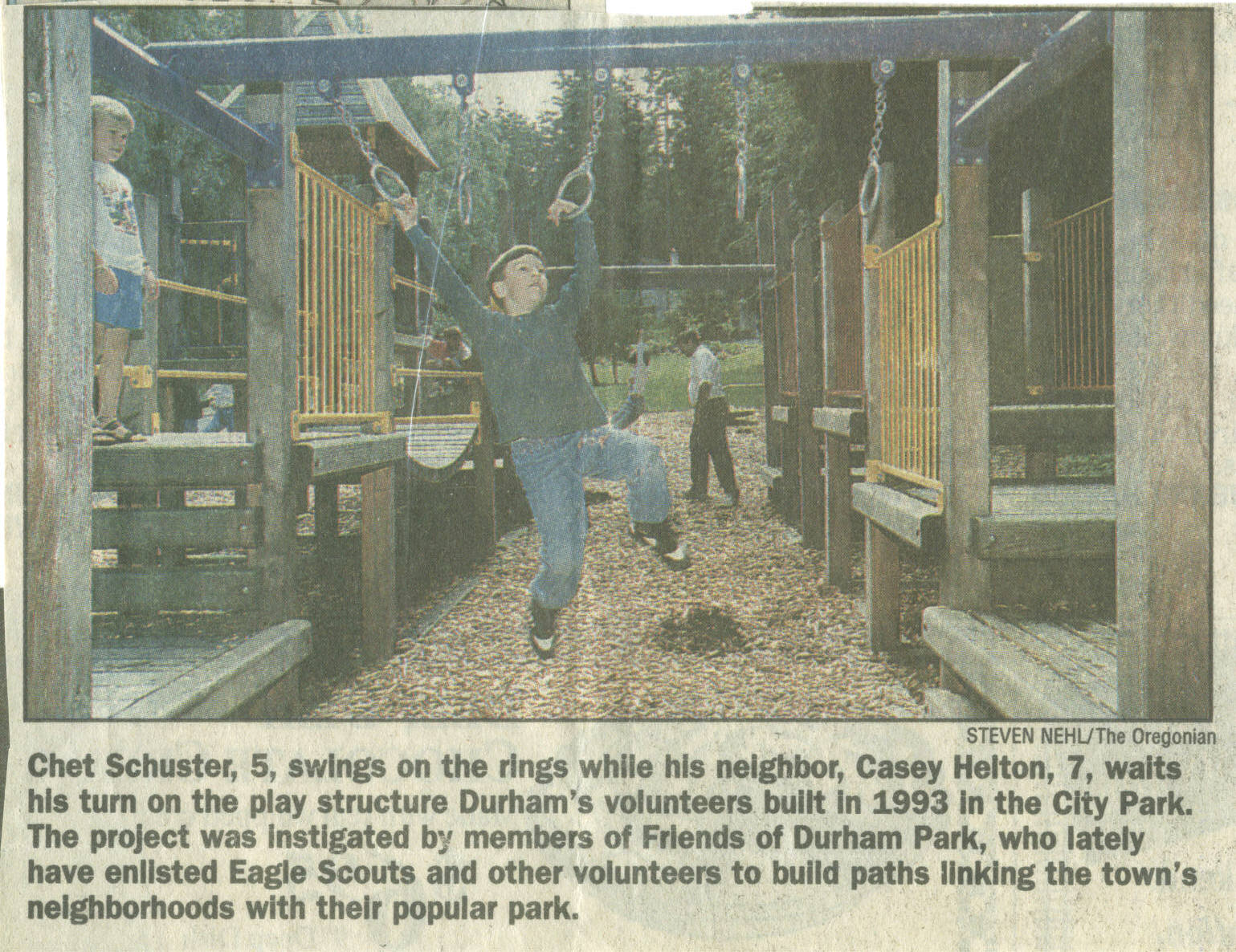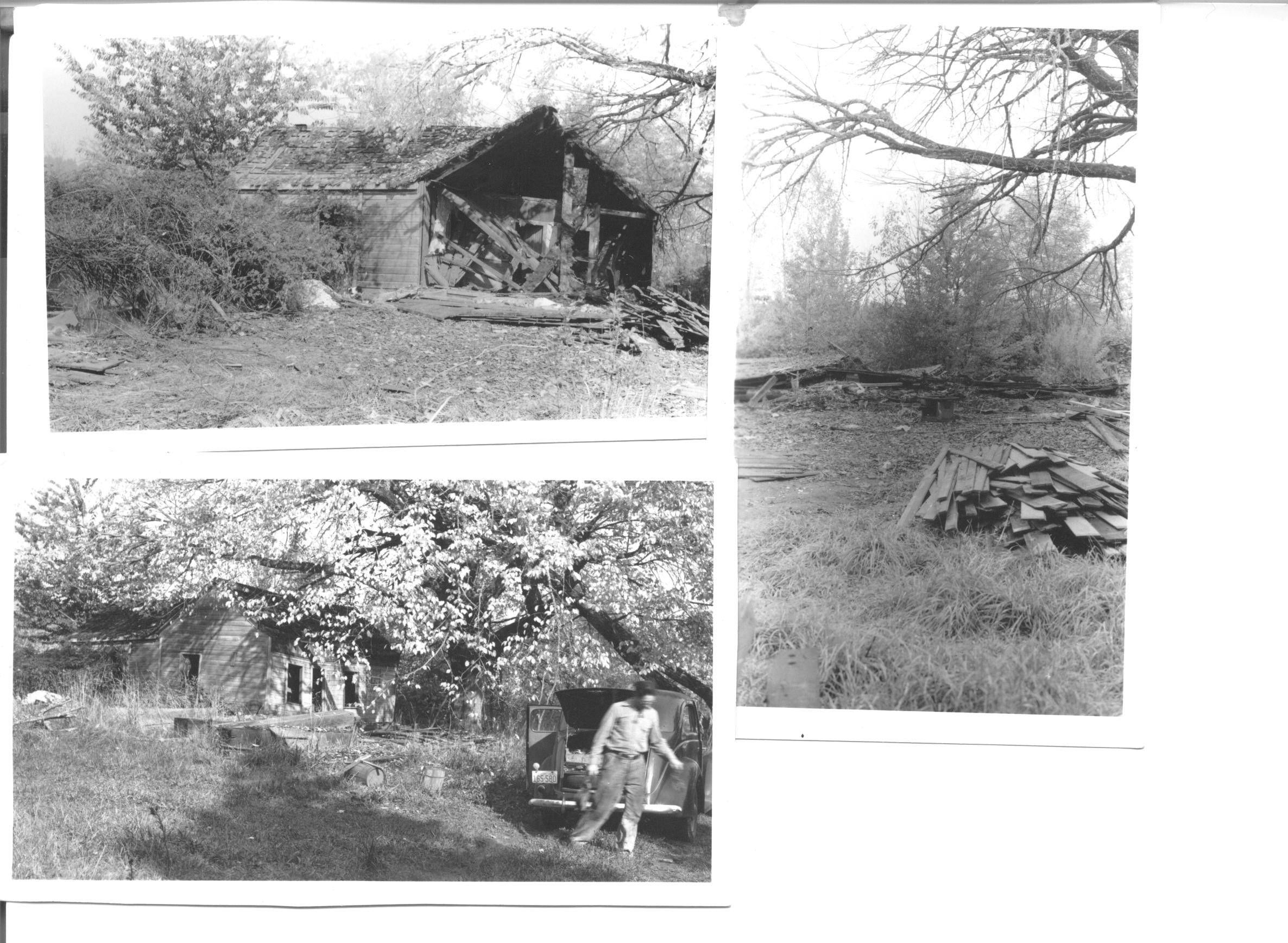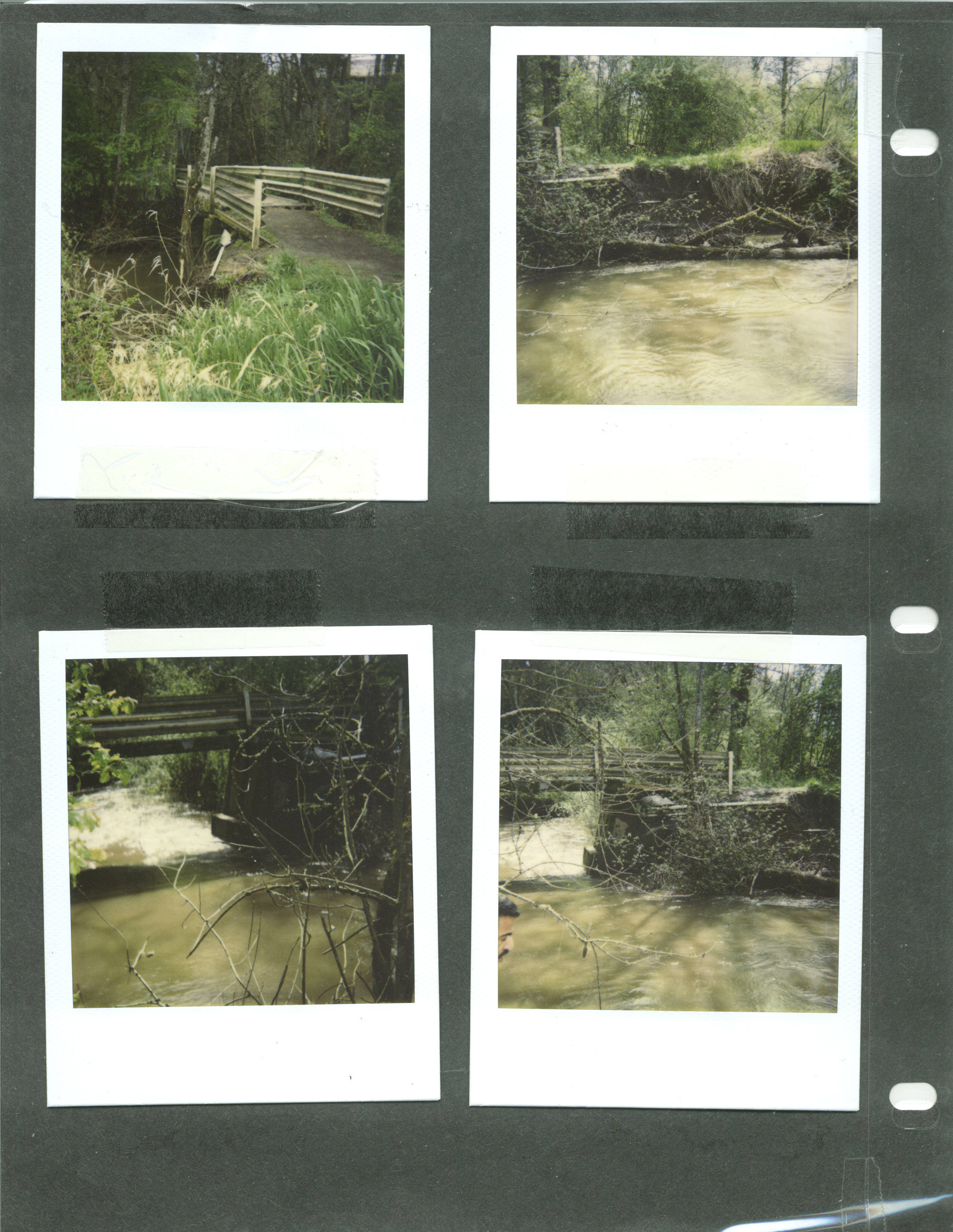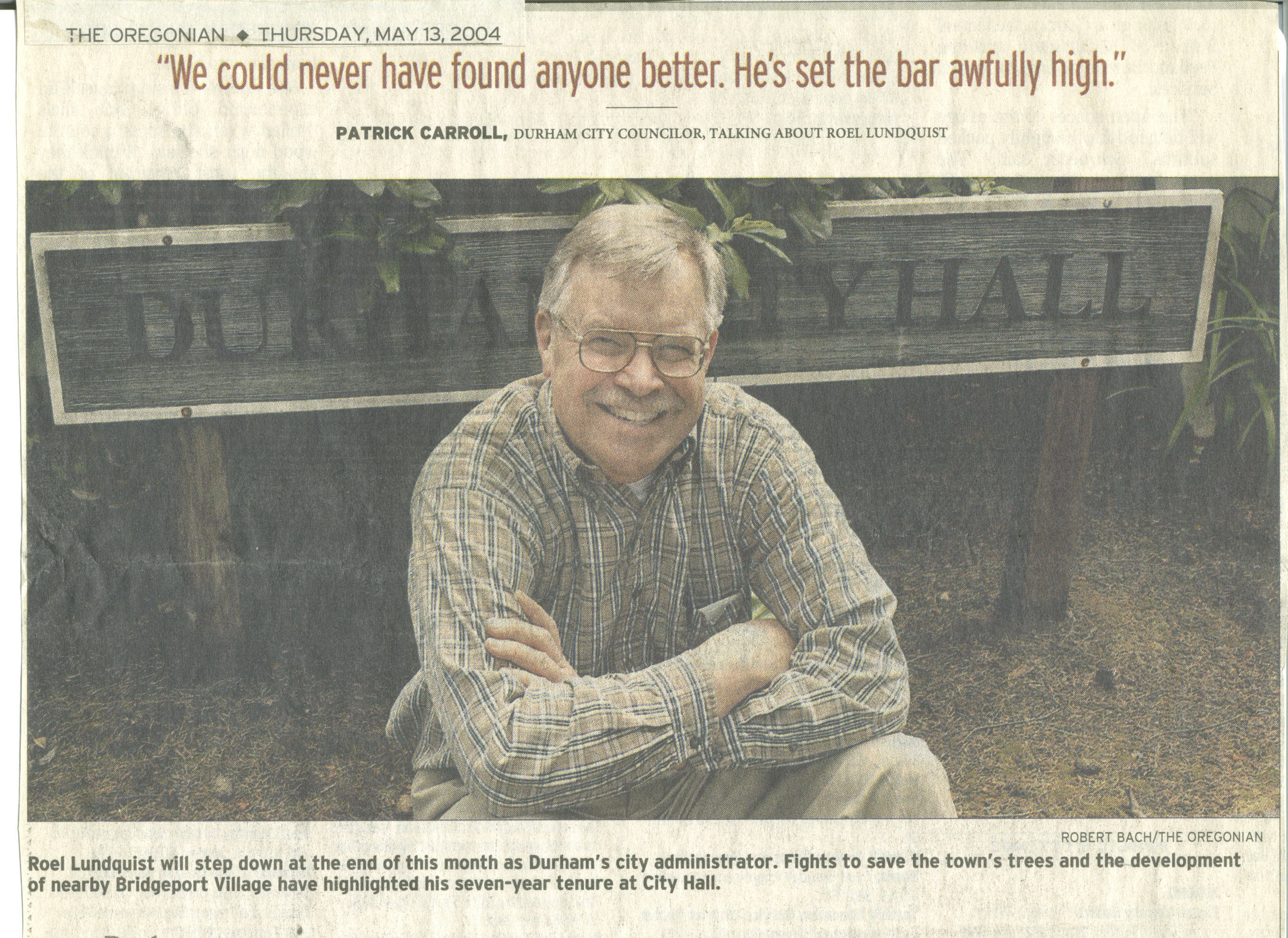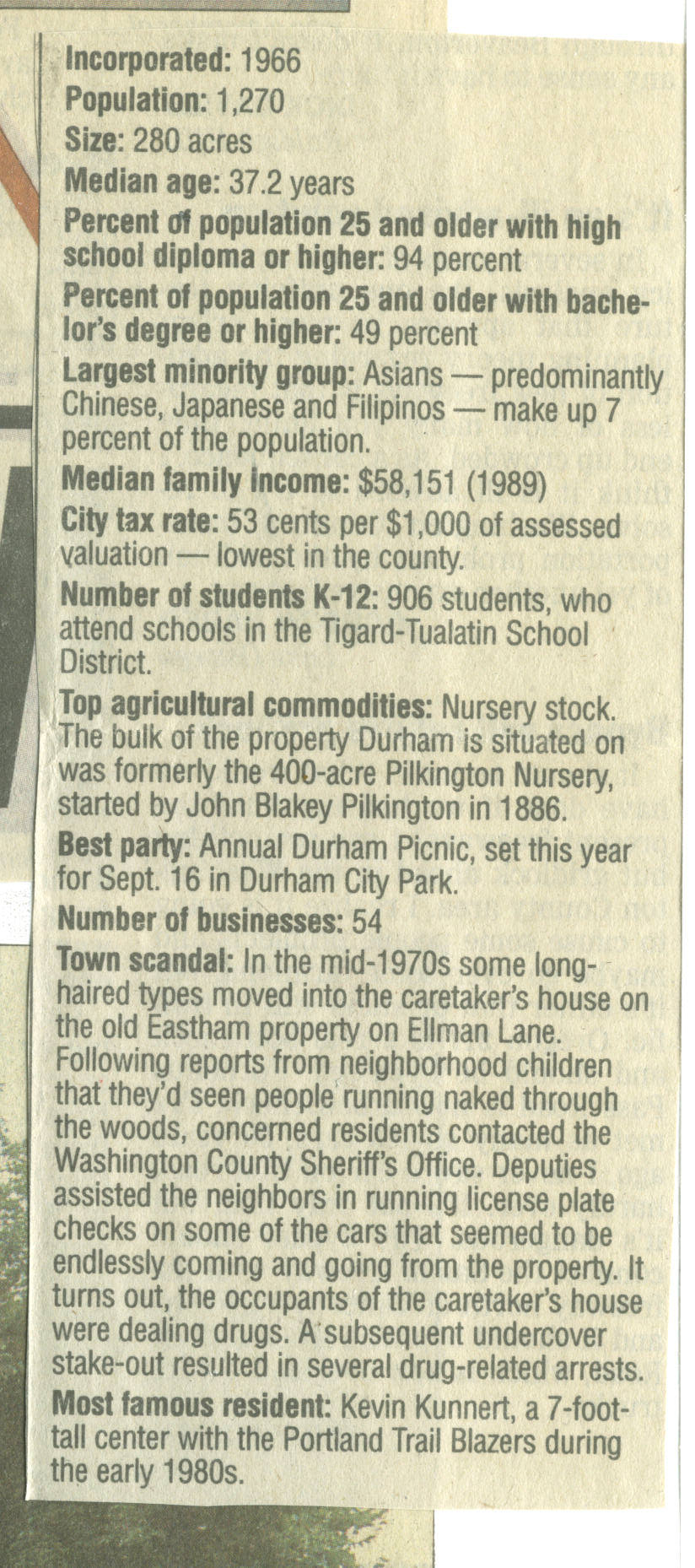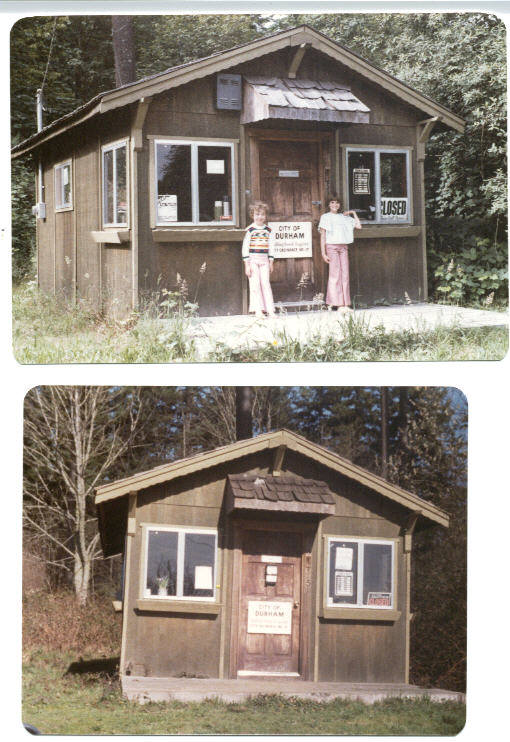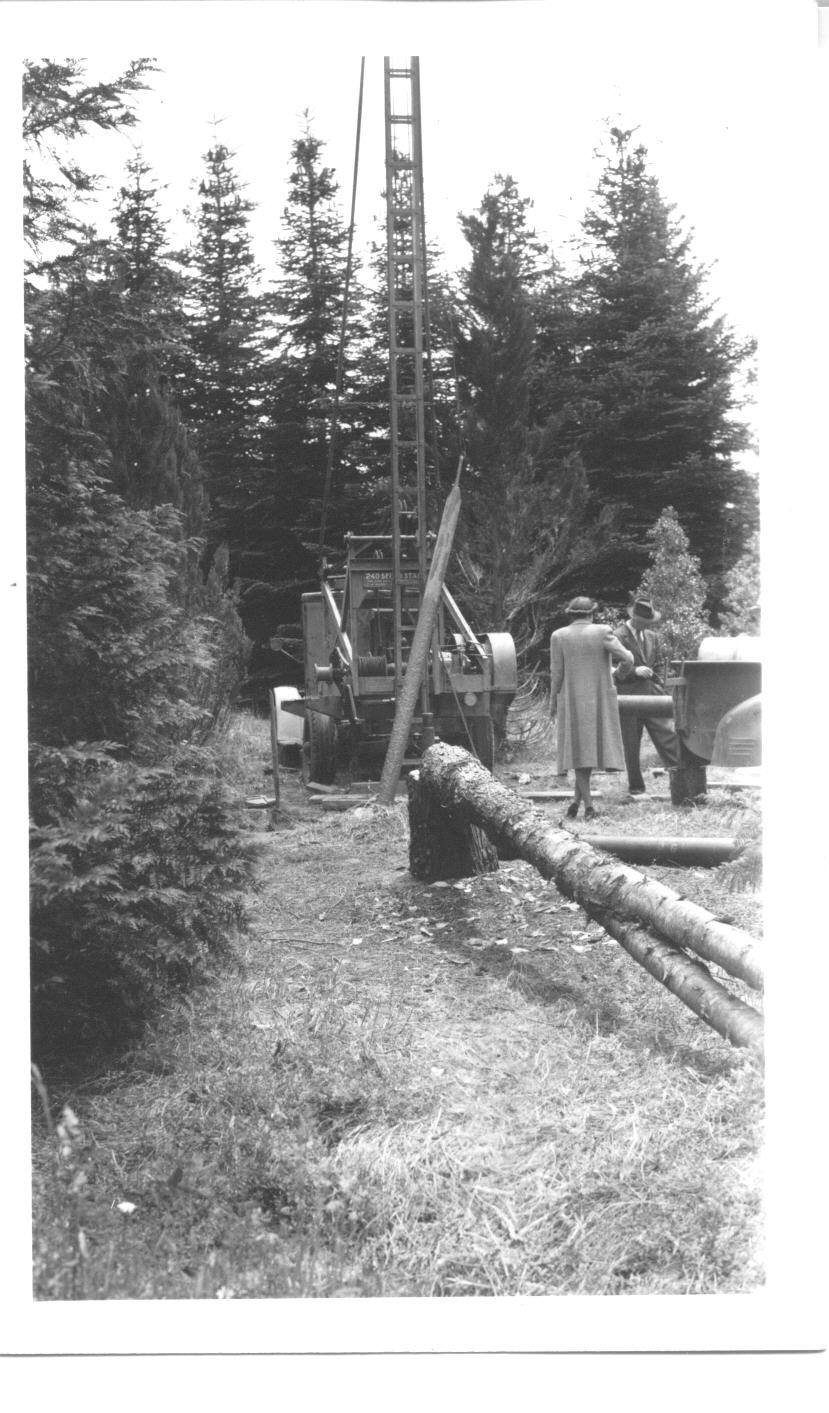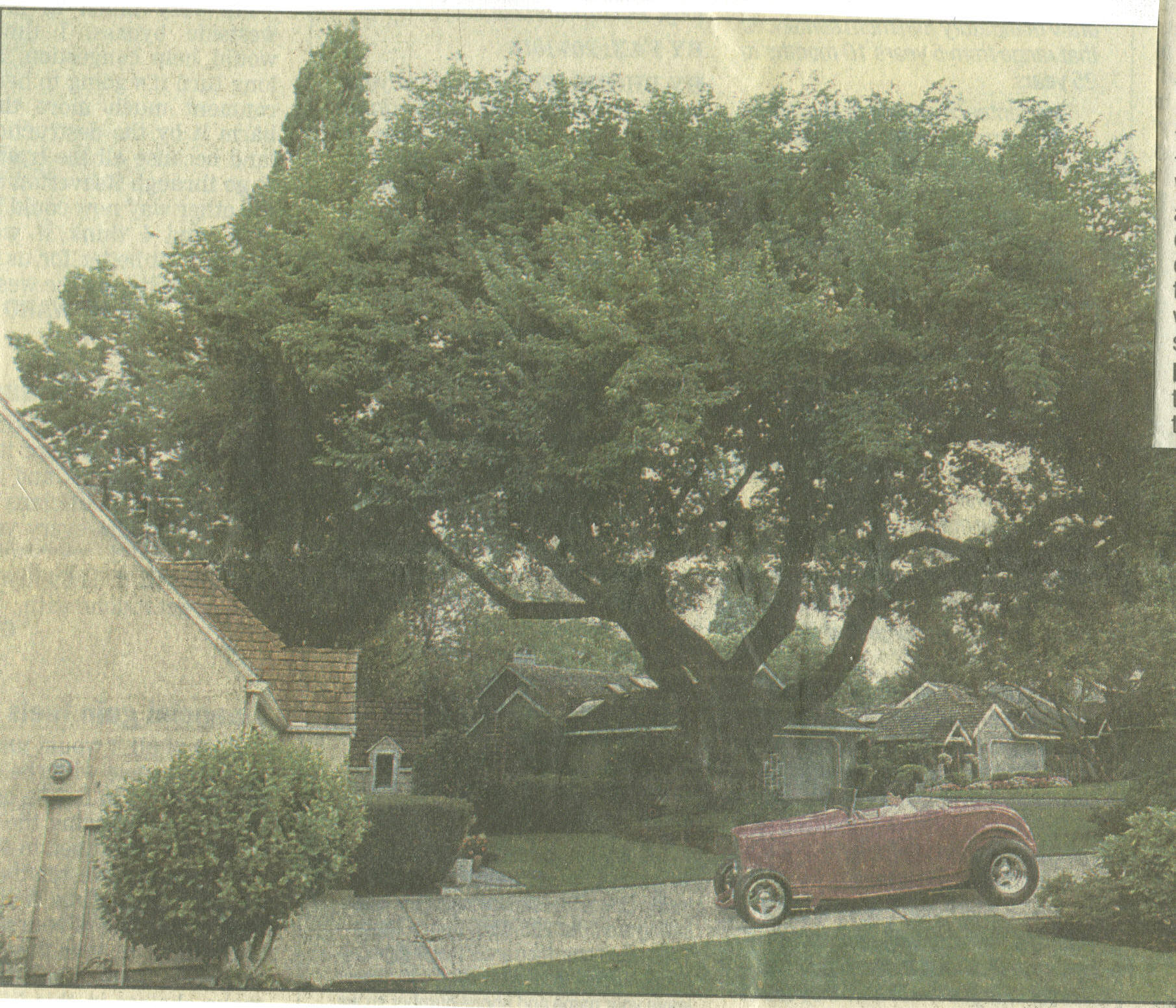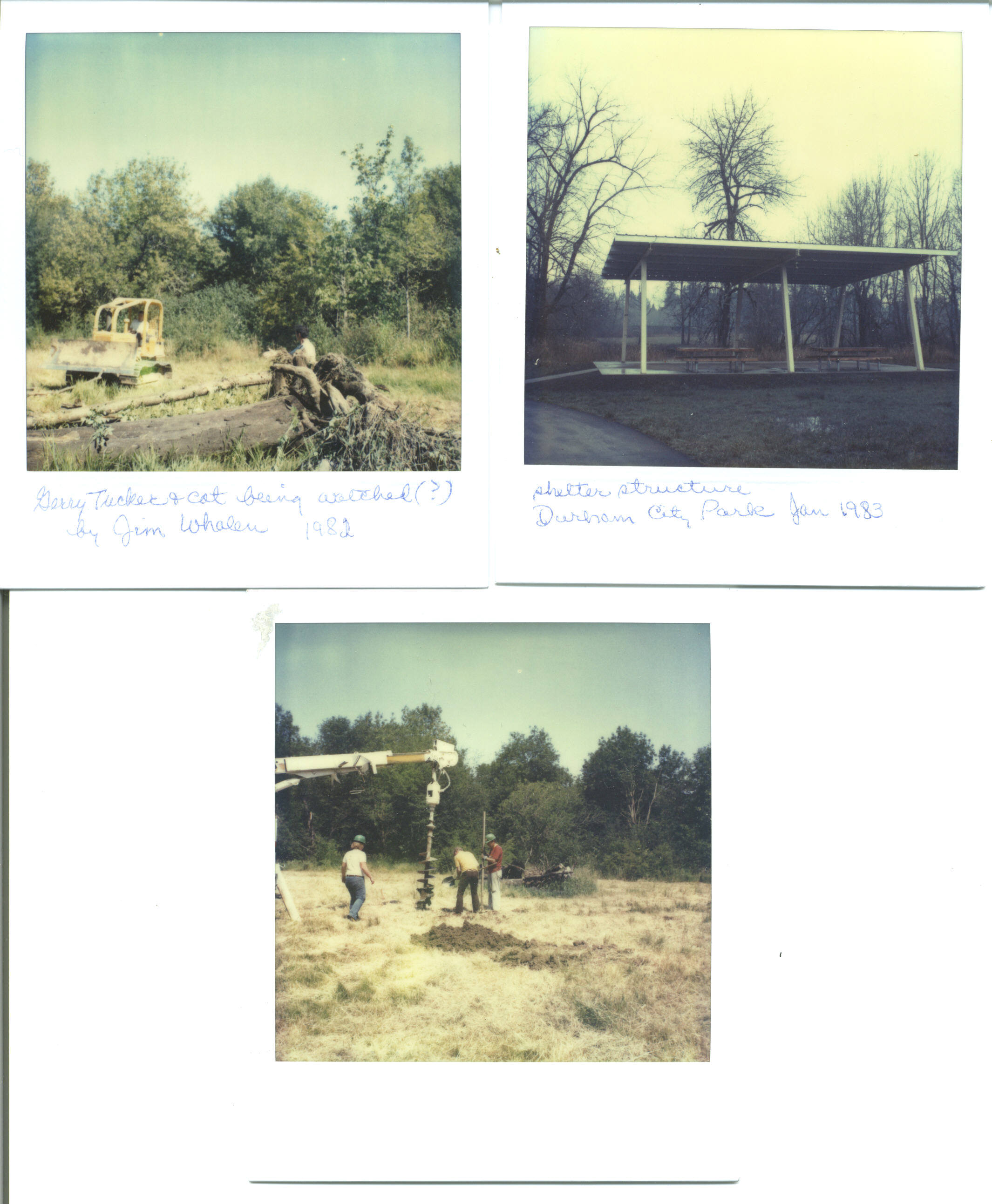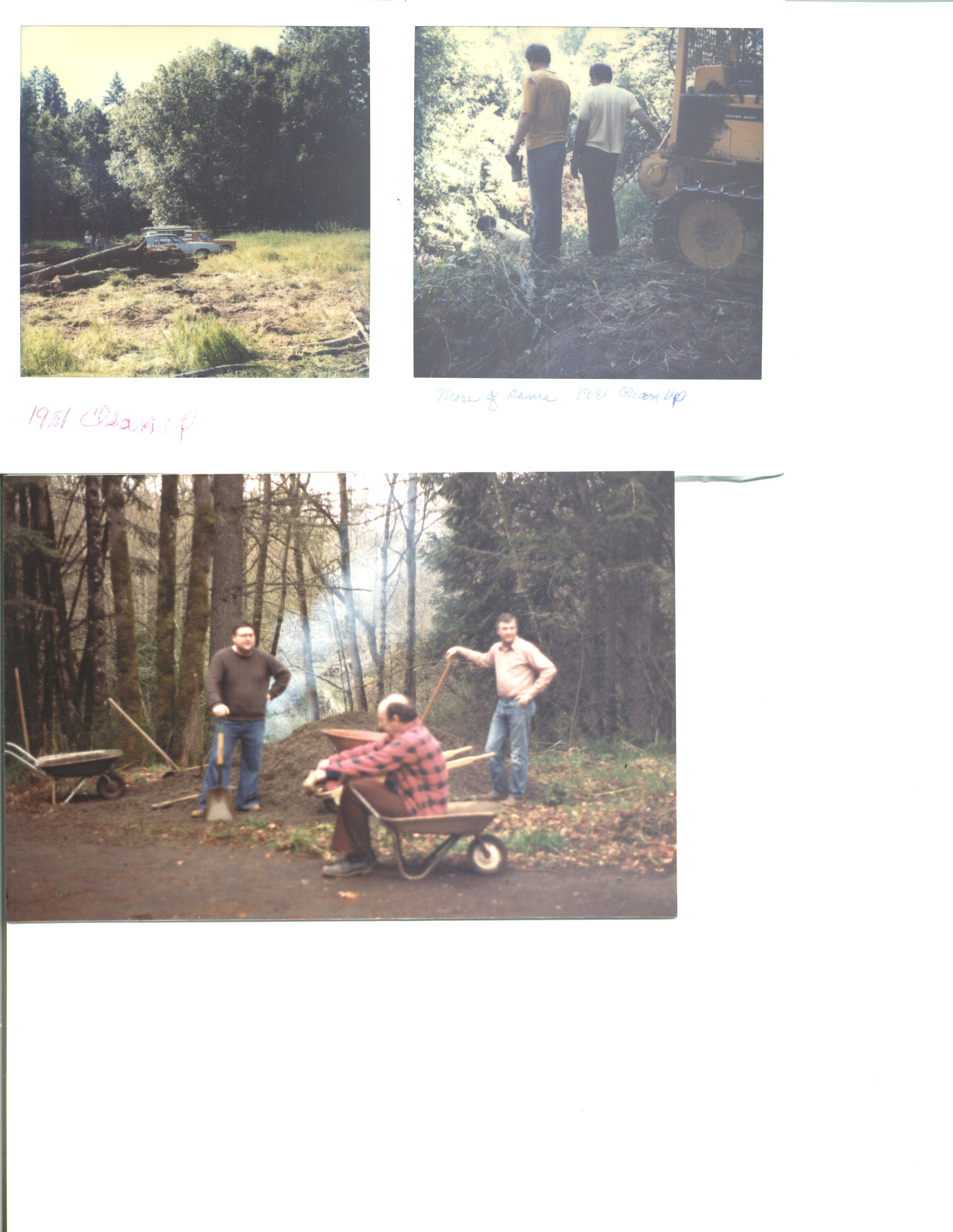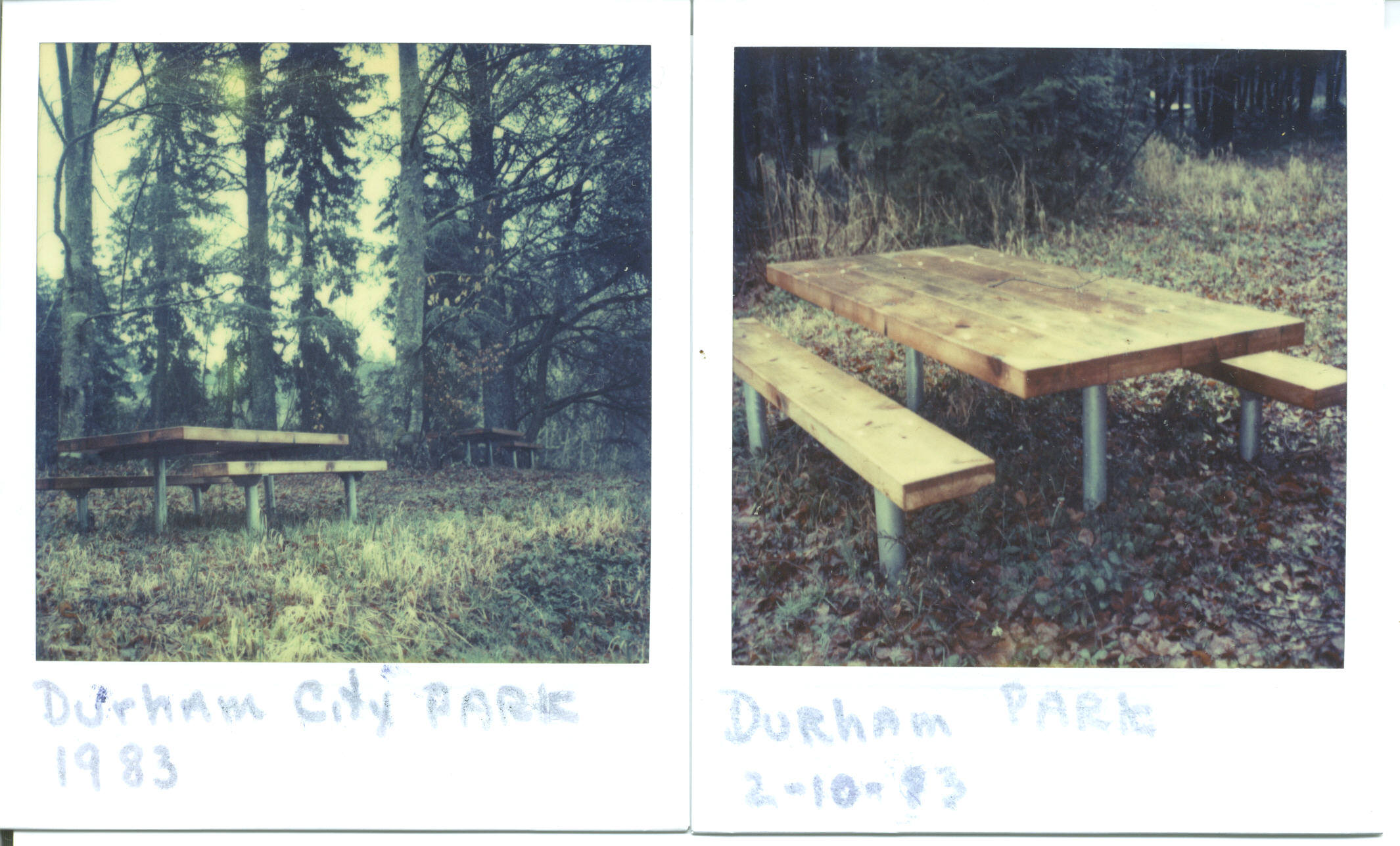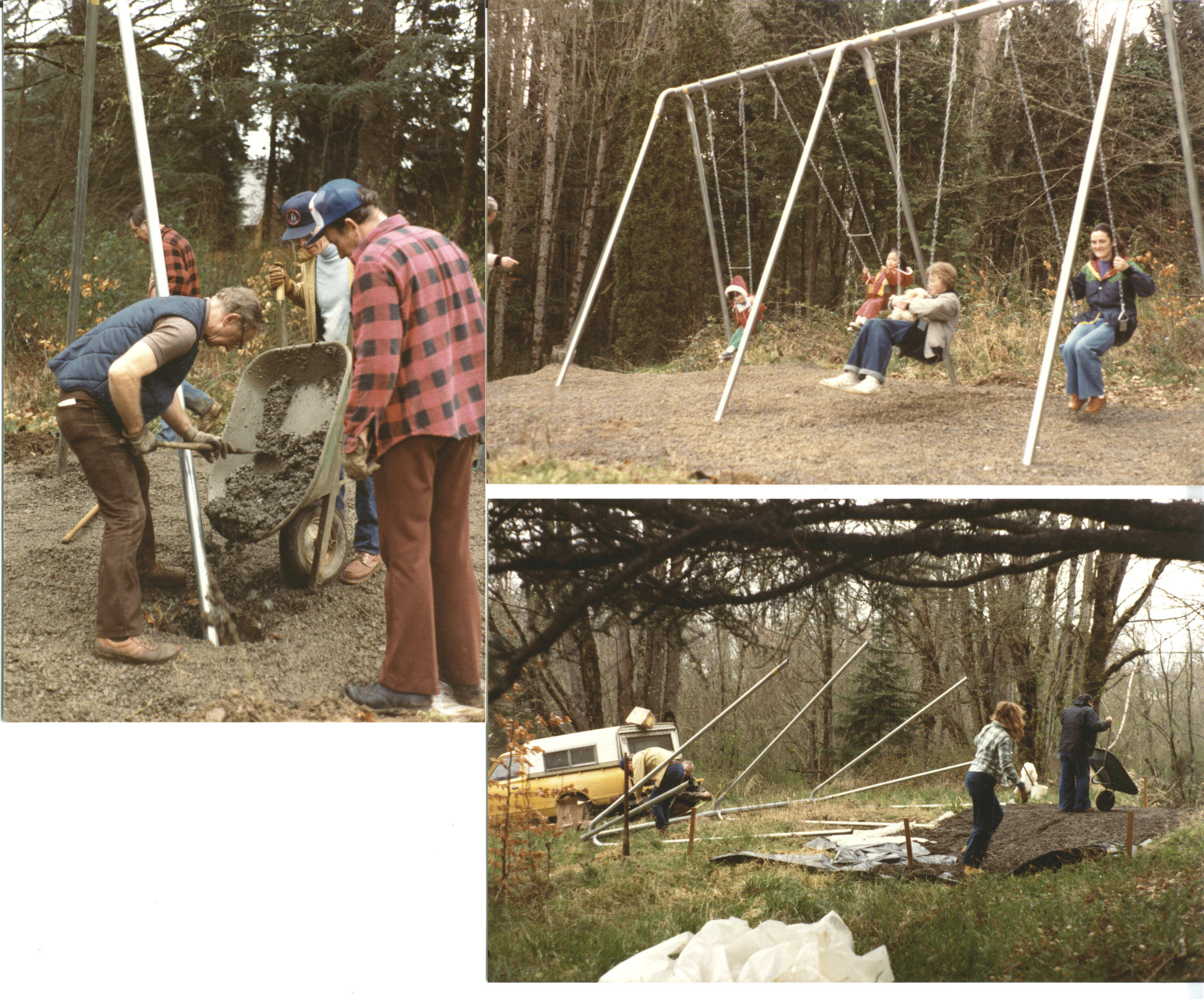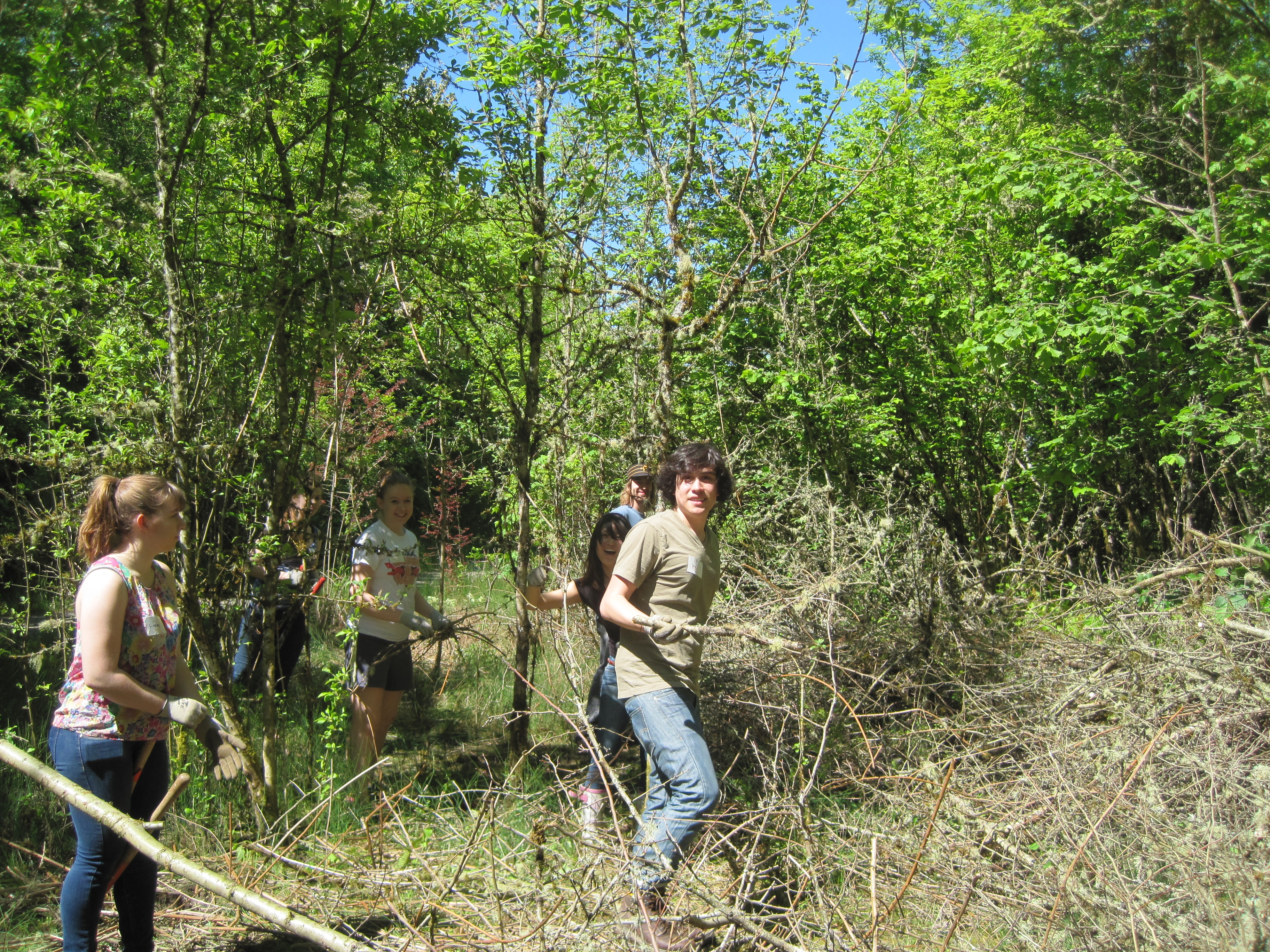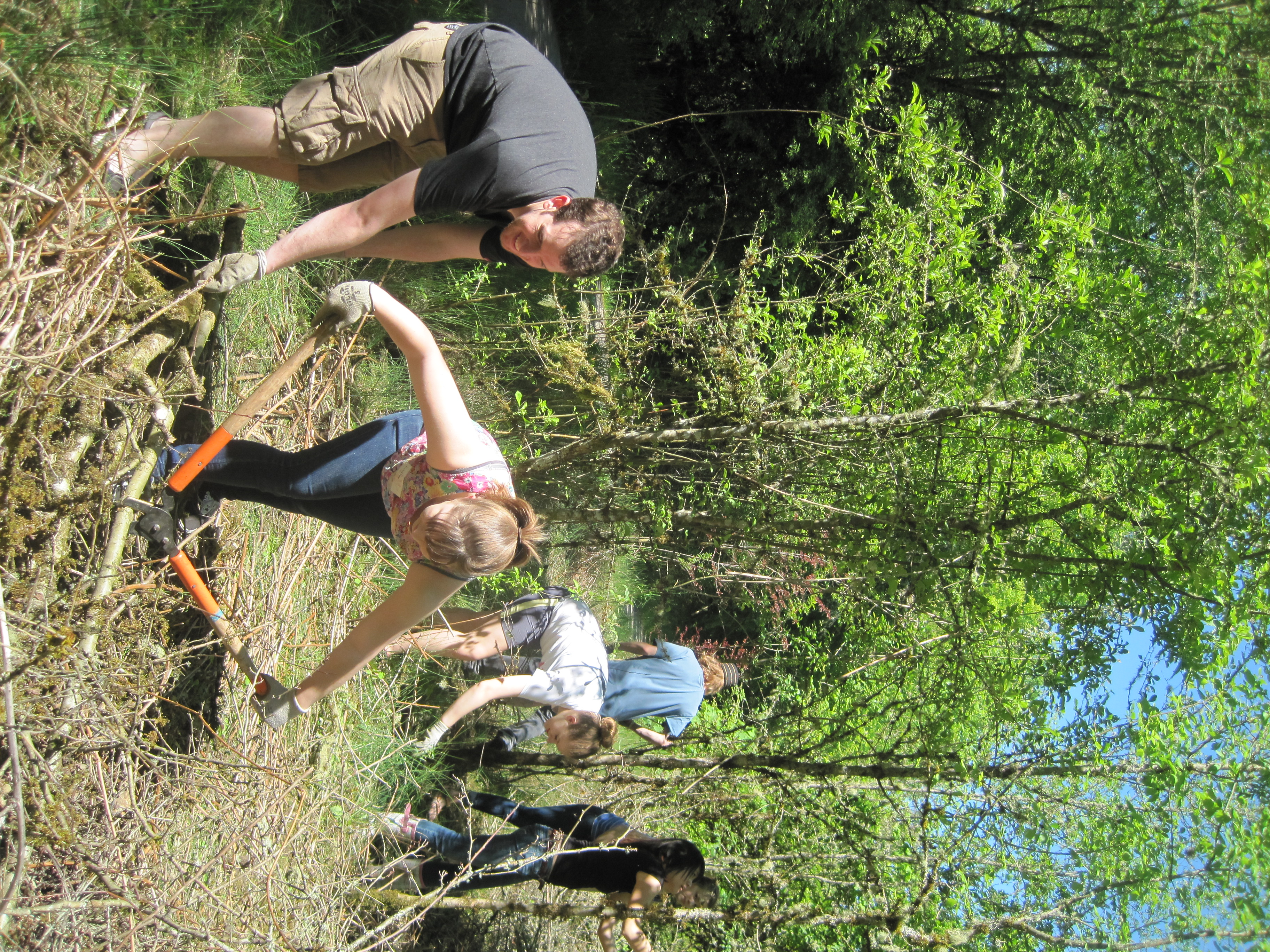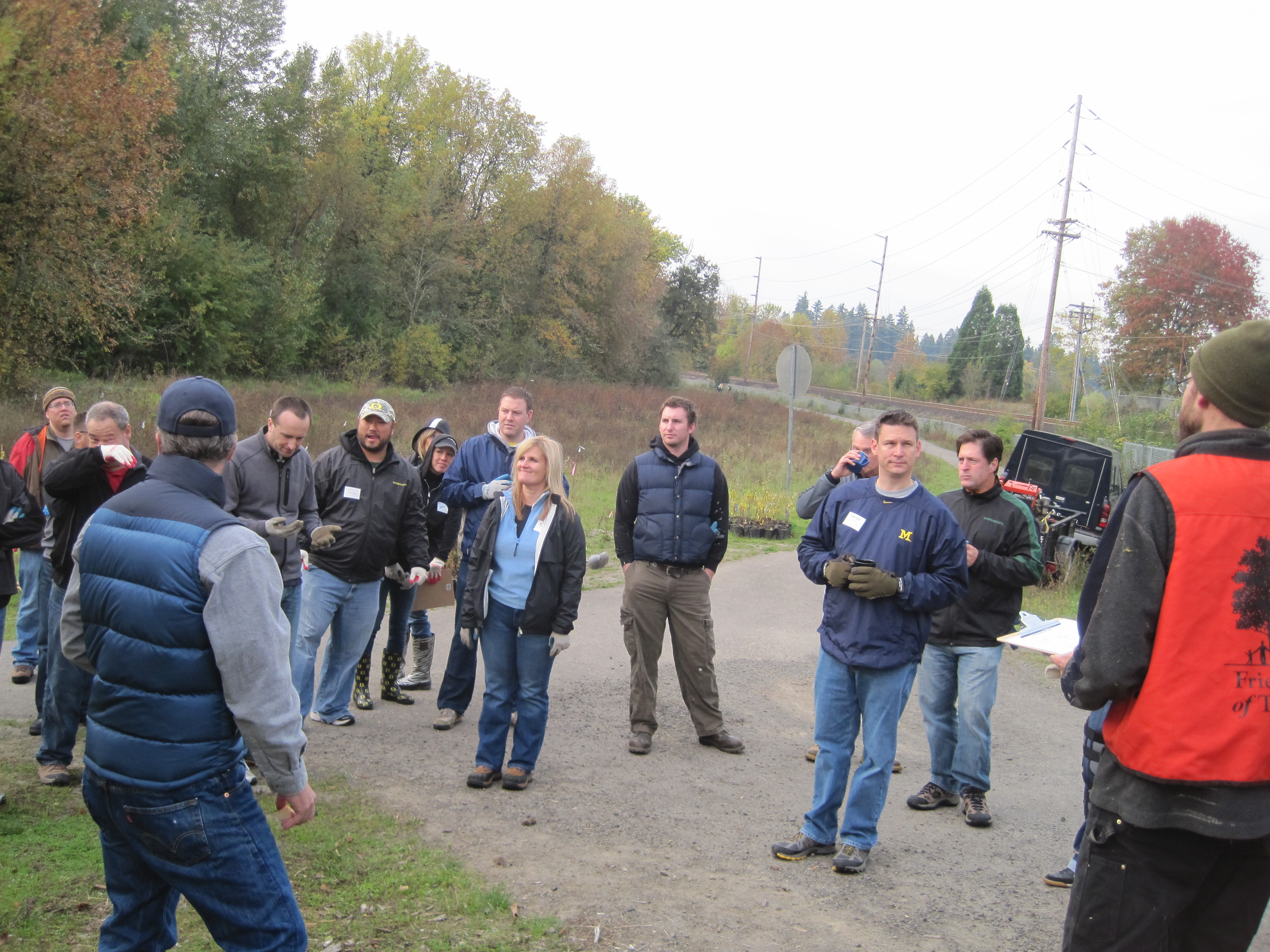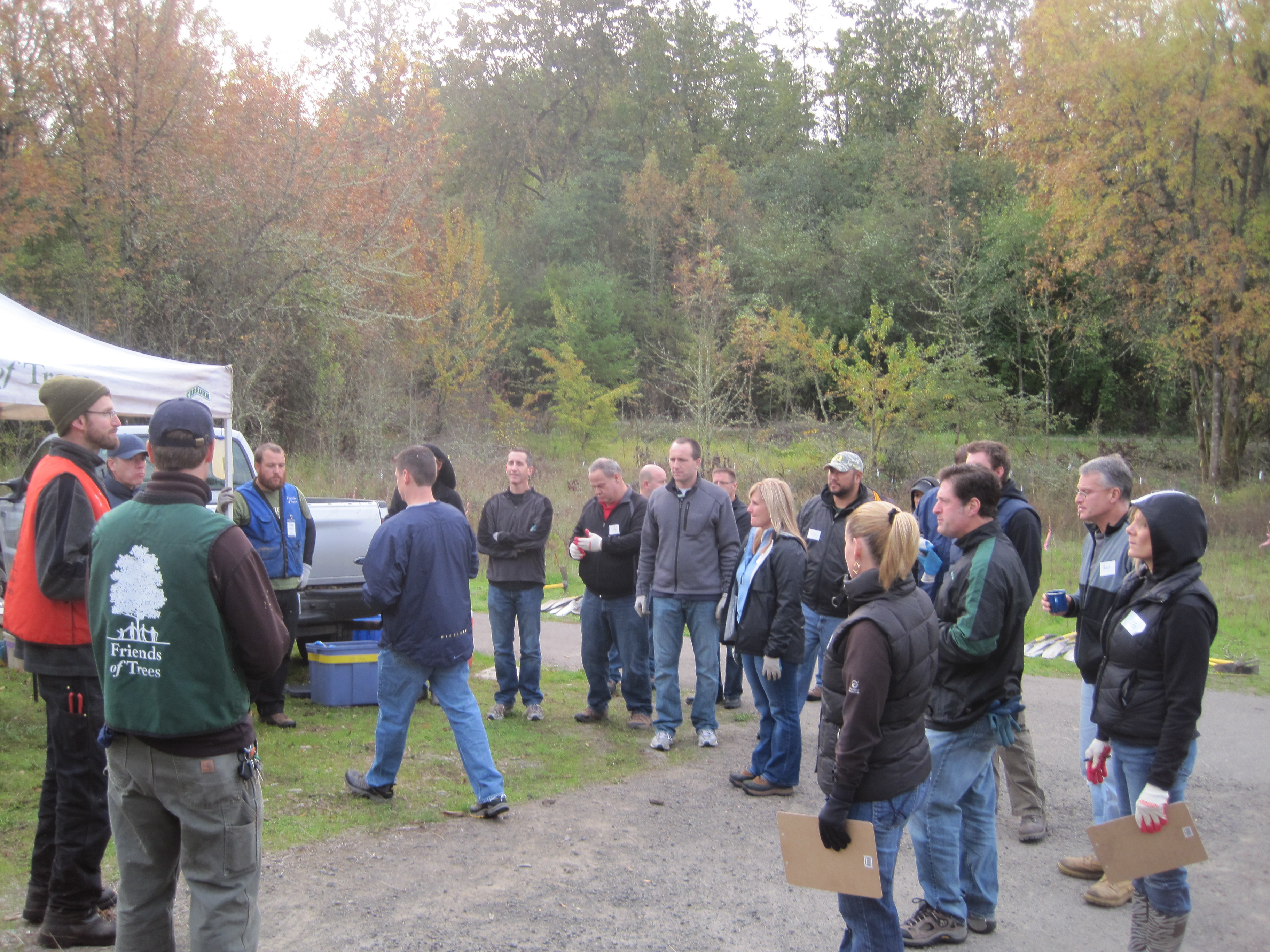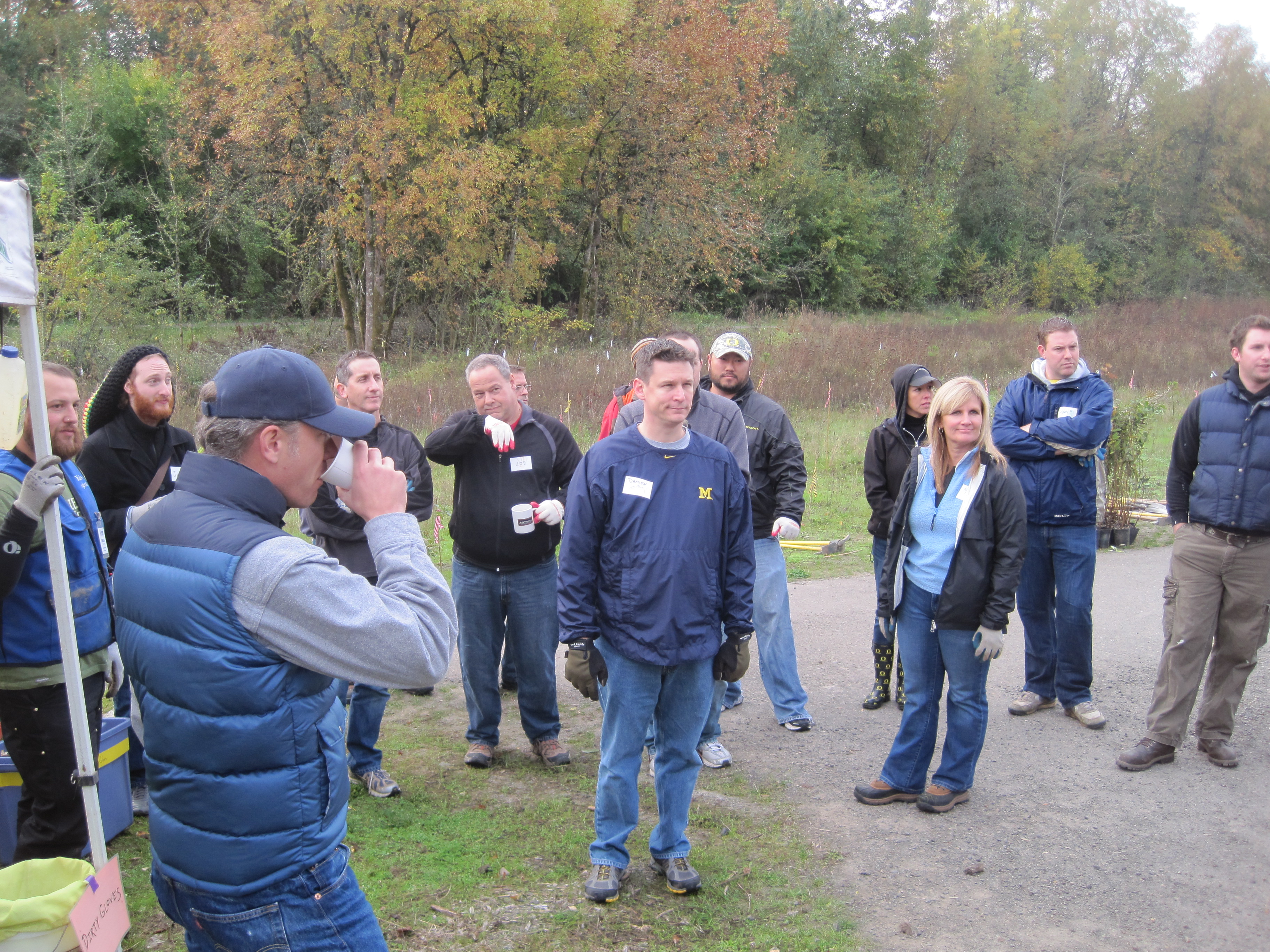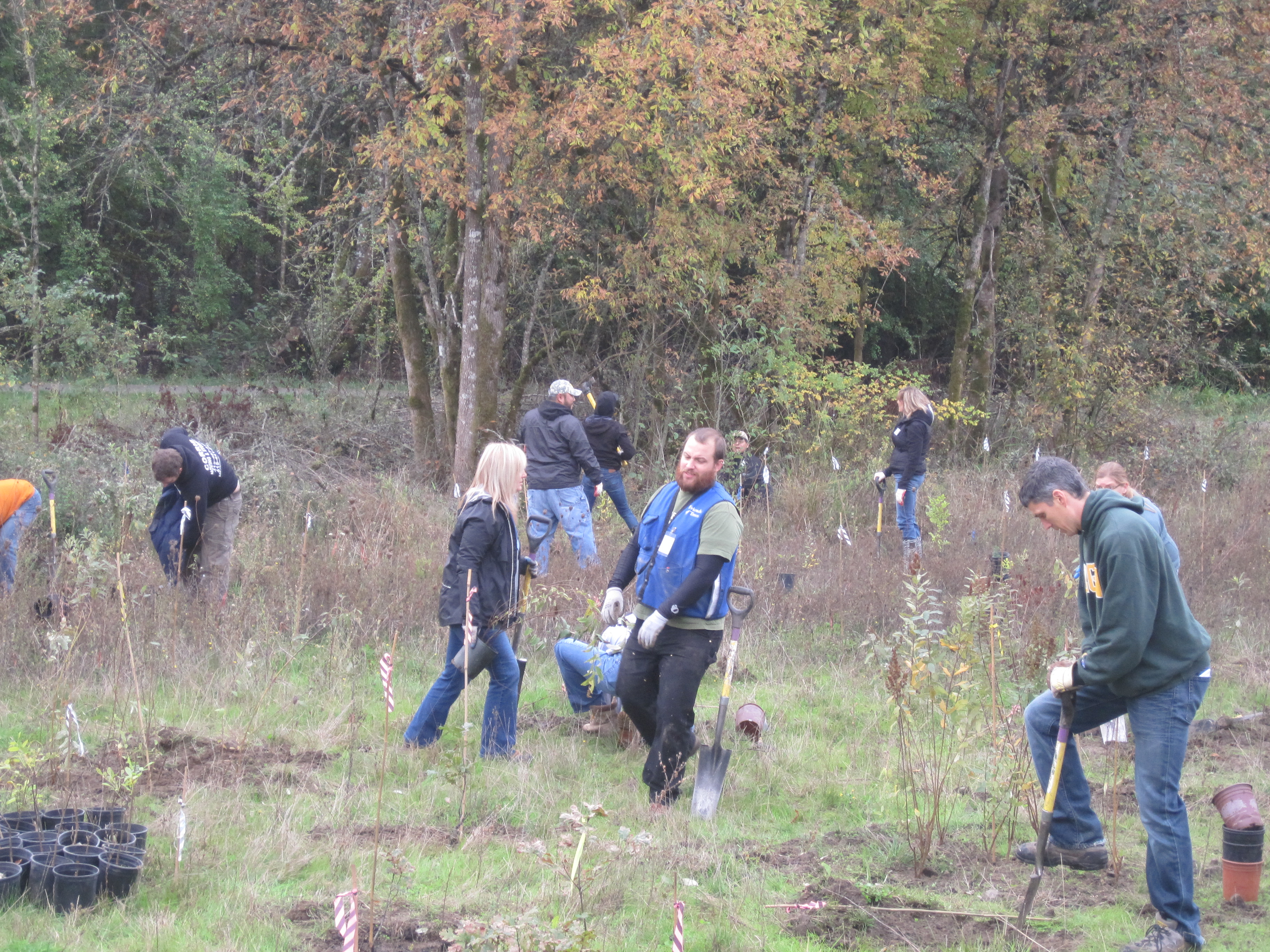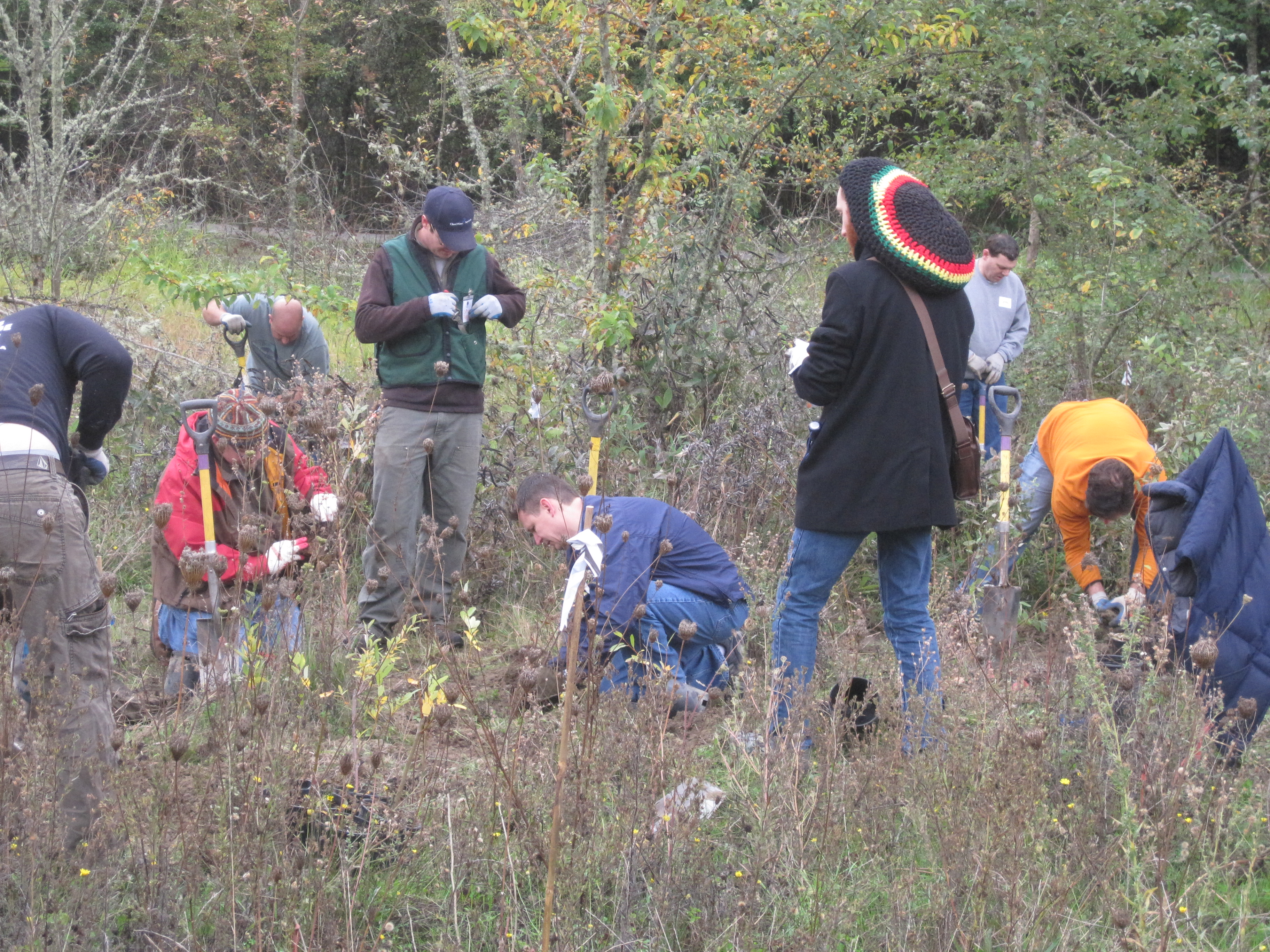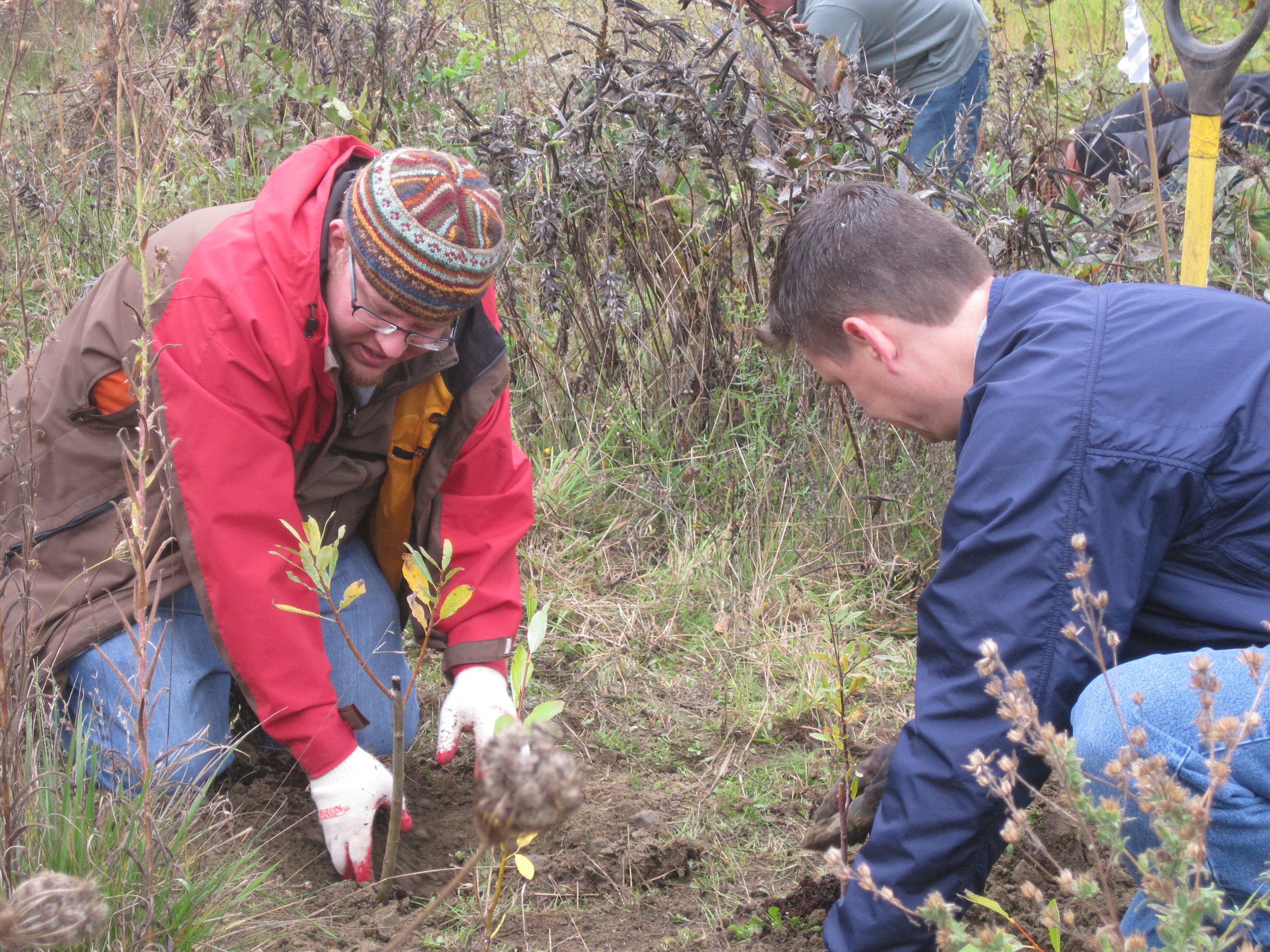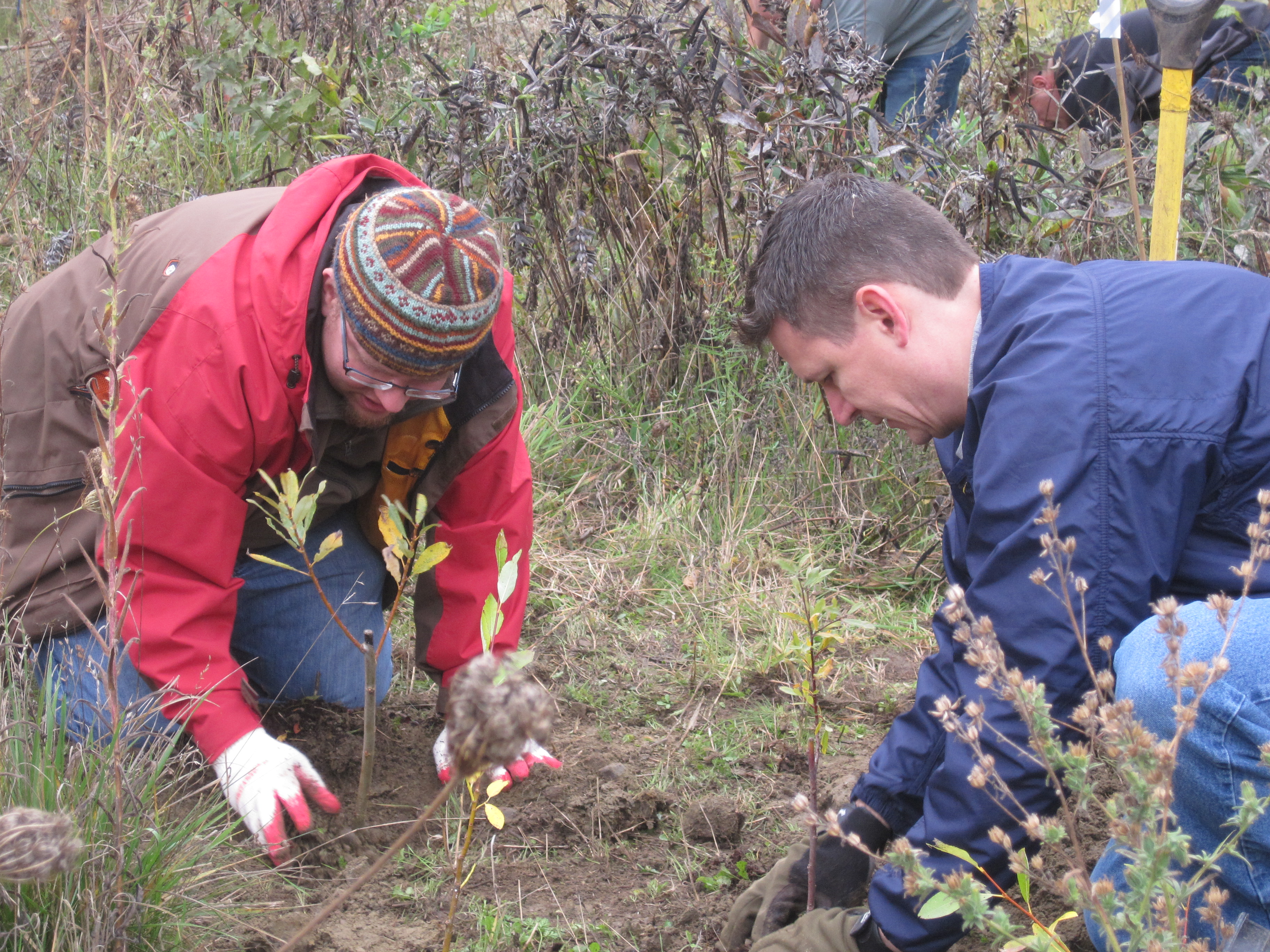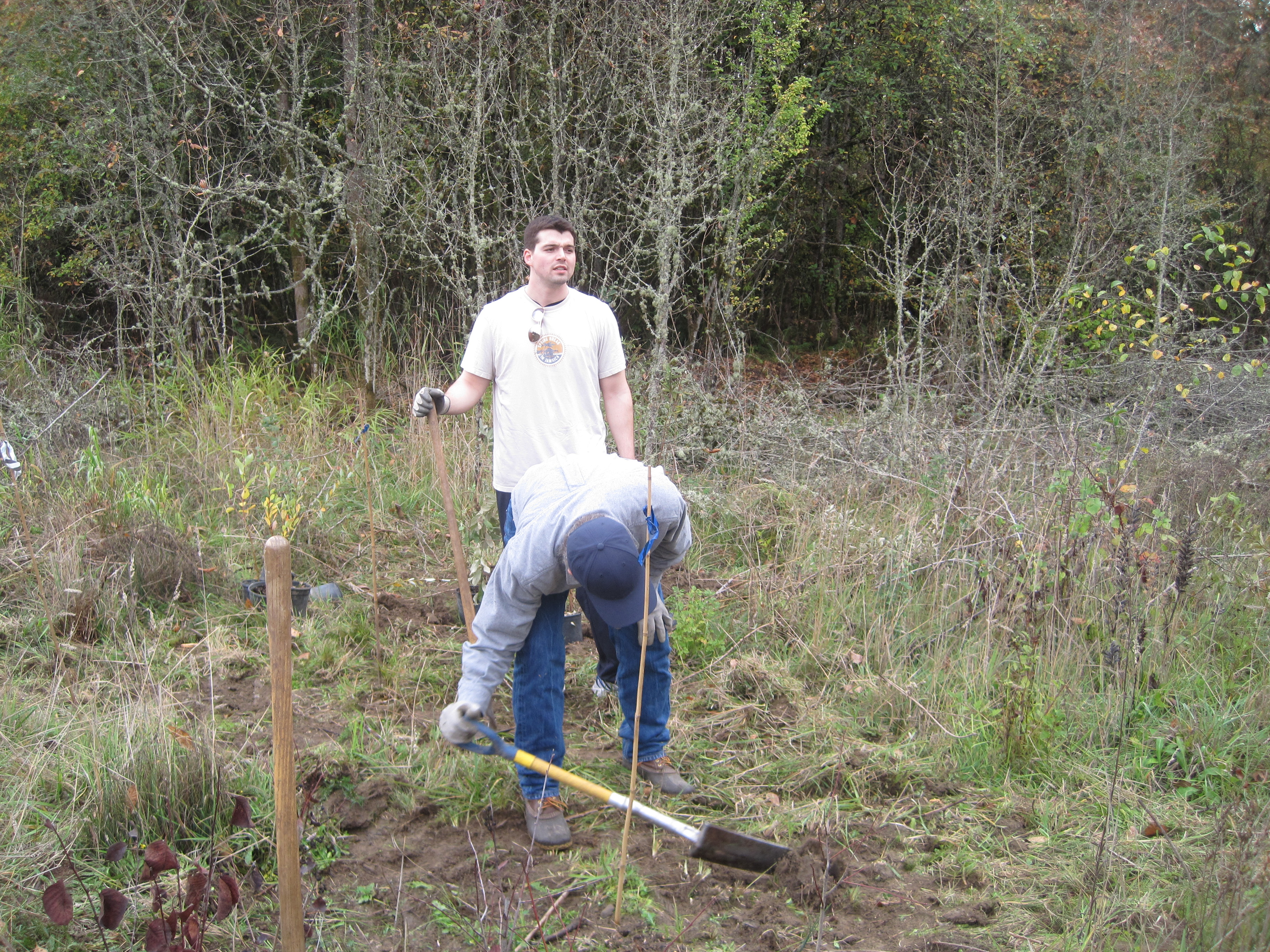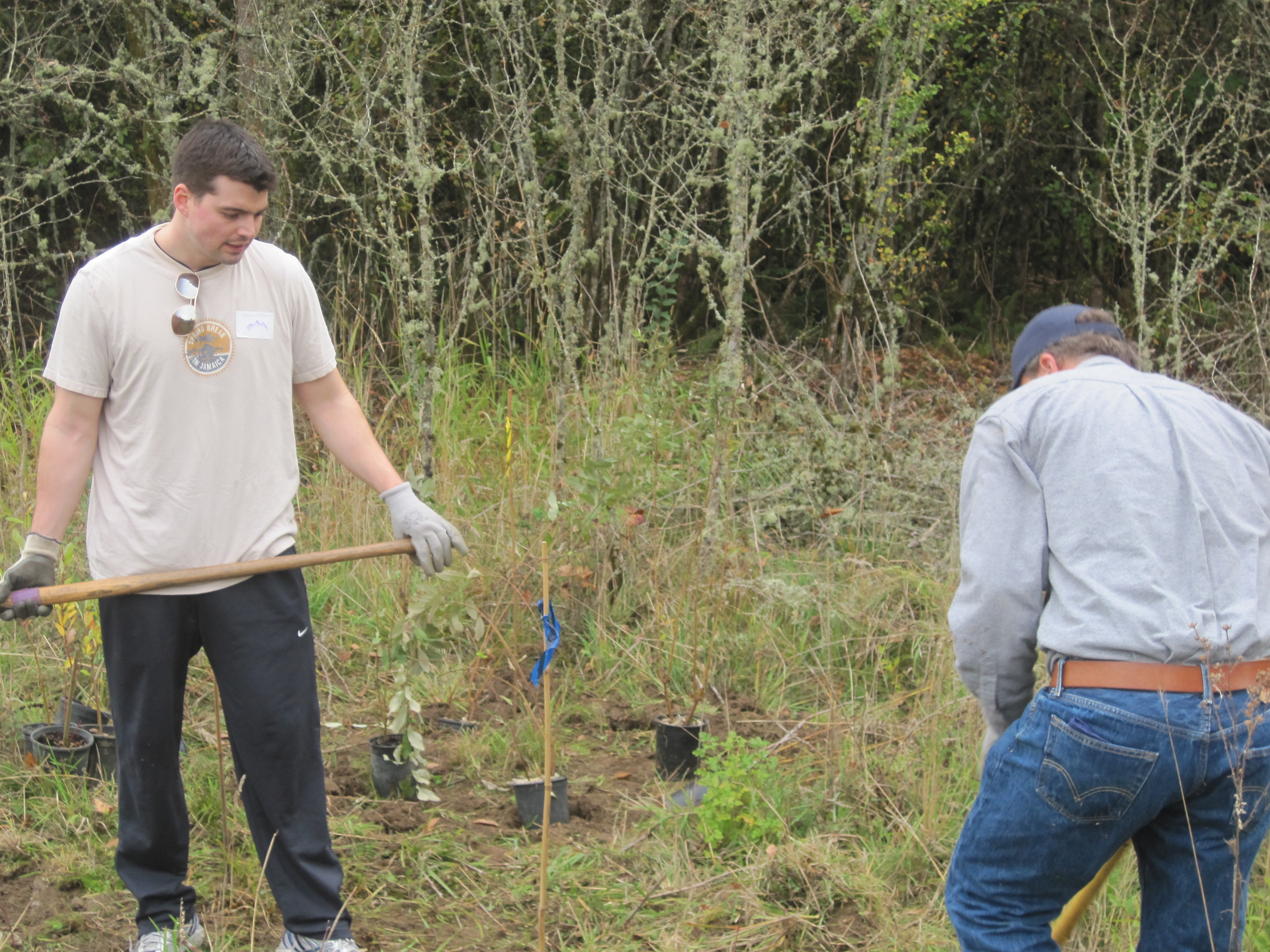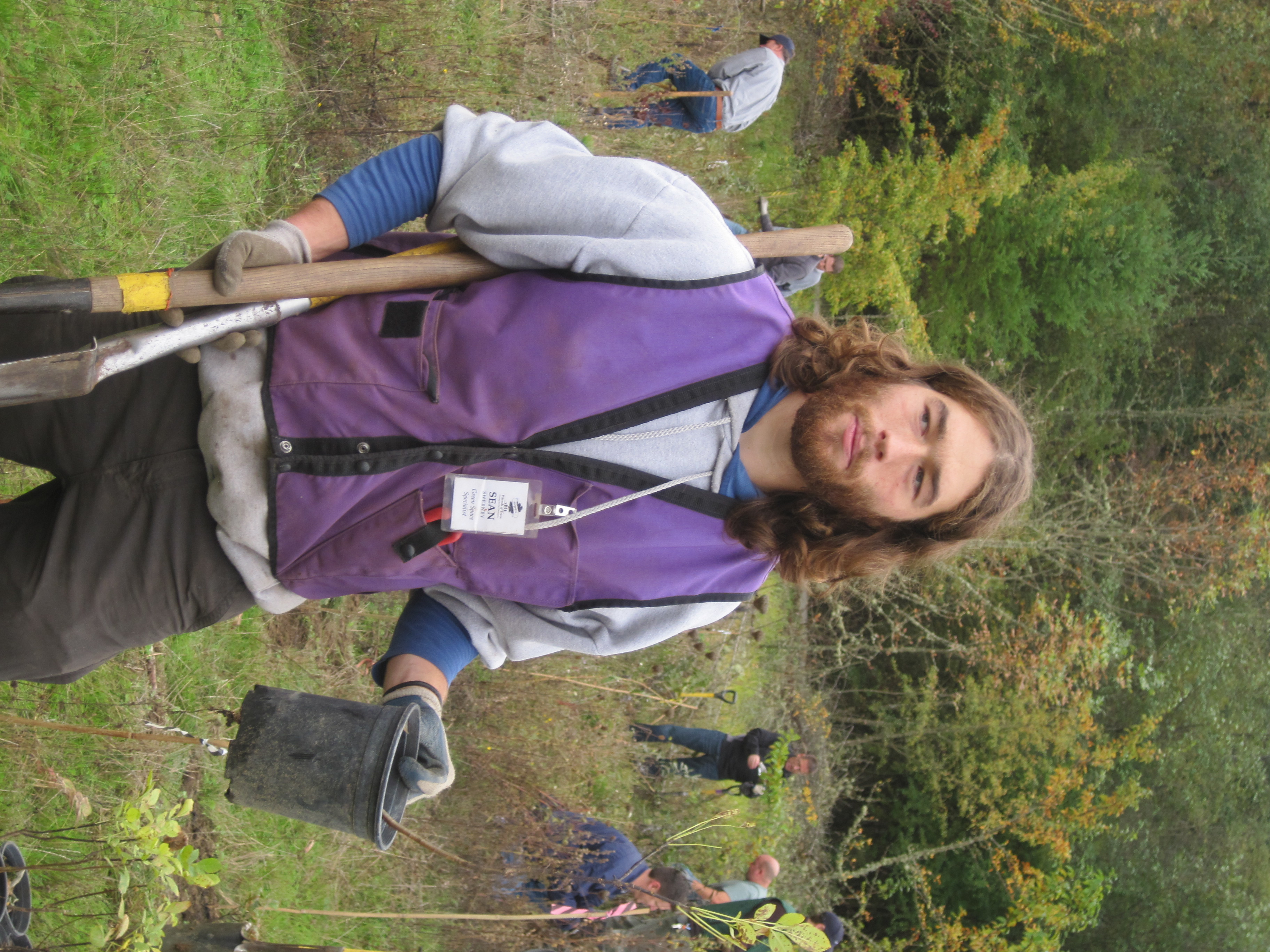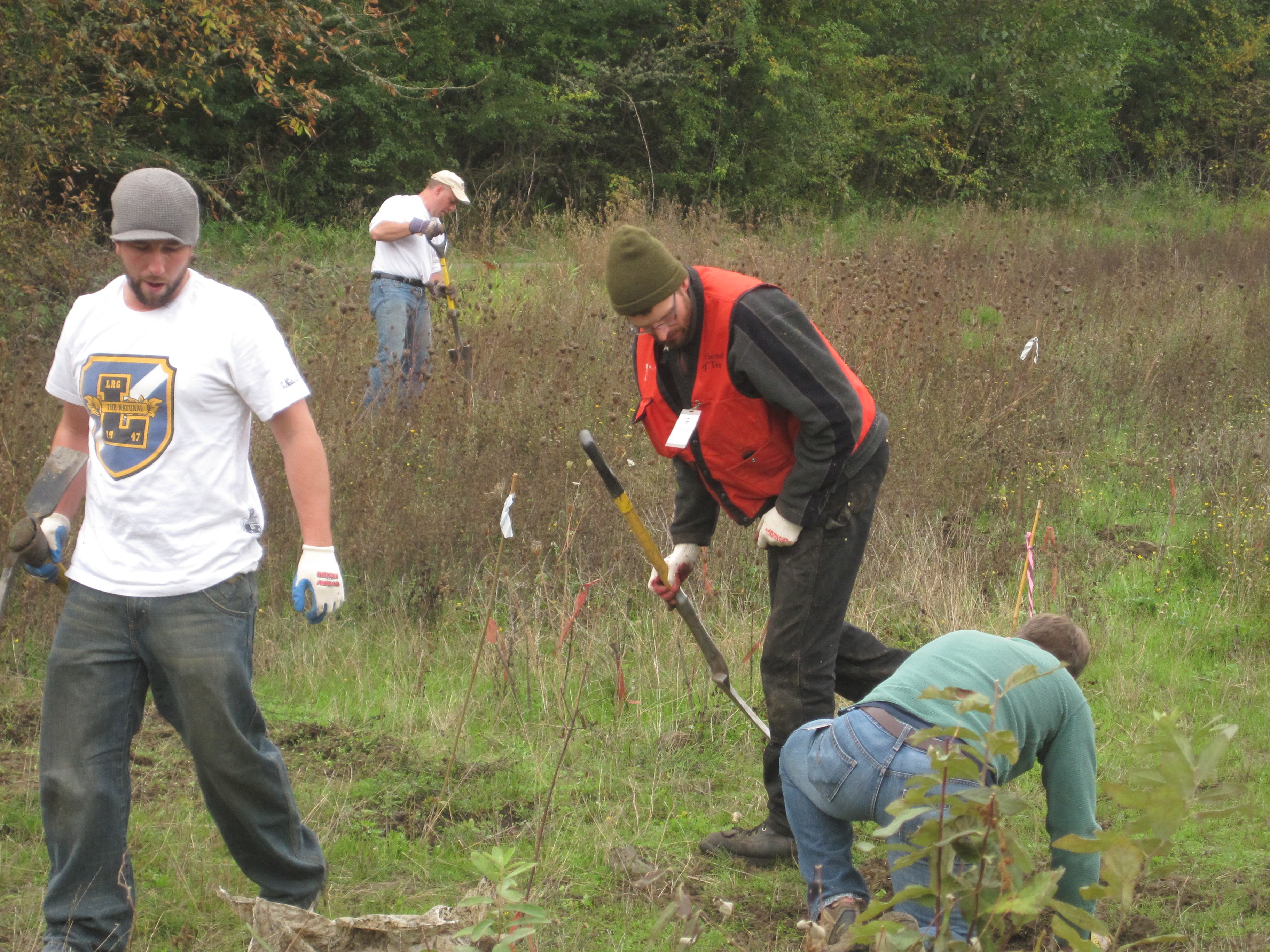History
The City of Durham is named after early Oregon pioneer and well-respected businessman, Albert Alonzo Durham (1814-1898). Albert and his family migrated from New York to Oregon Territory in 1847. They initially settled near Oregon City where he was part owner in a flour and sawmill along the Clackamas River. In 1848, he departed for California and struck it rich. Reportedly, he prospected along the banks of the American River averaging $300 a day in gold dust.
In 1850, Albert Durham returned to Oregon and built a new mill in an area he named “Oswego,” currently Lake Oswego, after a town in his home state. The Durham family remained in Oswego until 1866. In 1866, Durham moved his family and sawmill to a new location on Fanno Creek in the north end of present-day Durham. He also operated a flour mill at the location. He owned 320 acres along Fanno Creek. The area was known from then as Durham Mills. Albert Durham operated his mills until 1895 when Tualatin pioneer Steve Saum purchased the saw mill and moved it to a stream on his land. Saum milled lumber to build his house.
In 1908, the Oregon Electric Railway built through the area and established a stop at the mill site located at the north end of the city. The stop was named “Durham Station” and the area became known as Durham.
Trees have always been a prominent part of Durham history. Many pioneers chose to occupy the area because of the old growth forest that consisted of Douglas fir, maple, and cedar trees. The earliest of area settlers include the William Graham family, the Solomon Richard- son family, and Mr. James Hicklins. Each had land claims in the area by 1880.
In 1908, the Pilkingtons established a nursery in Durham on 40 acres between Boones Ferry Road and the Tualatin River including much of the Kingsgate neighborhood. The site was ideal because of location next to the railroad. Most of the largest existing oak, magnolias, spruce, and pine trees in the Durham were planted by the nursery in the early 1900s. The Pilkingtons also owned nursery land on Pilkington Road in Lake Oswego and additional land in Tualatin.
The Pilkington Nursery was one of the largest nurseries in the West and was known for growing high quality trees and shrubs, specializing in fruit and ornamental trees. Many of the Portland streets are lined with trees that were grown at the Pilkington Nursery. They landscape the Meier estate which is now Lewis & Clark College and Aaron Frank Estate in Garden Home. The Pilkington Nursery supplied timbers for the construction of Stanford Stadium. Forty-foot timbers were put on trains at Durham station and shipped to California. The nursery also supplied nursery stock to establish the grounds at Stanford University. Clarke Pilkington ran the Durham nursery operation until the death of his father in 1939. After the death of his father, Clarke’s mother sold much of the nursery land. Clarke and Ester Pilkington continued the nursery business in Durham until 1955. The Pilkington house still stands in Durham on Upper Boones Ferry Road.
The Ellman family were early residents of the Durham area. They built their first house at the end of Ellman Lane. Louie Ellman went on to build many of the first houses on Ellman Lane, Peters Road, and Upper Boones Ferry Road.
In the early 1920s much of the area was still forest or farm land. The community centered around the two-room Durham School. A six-room home on 6 acres with a barn and shop building could be purchased for $4,200. But the Depression brought tough times. The Oregon Electric train service went out in the late 1920s. Other industries closed up and people depended on their small farms.
After the war, the area drew more people. I-5 was construct- ed in the 1950s fueling more growth. Roamers Rest was a popular summer spot on the Tualatin River. The park rented swimsuits and boats. On a hot summer day, over 200 people could be found swimming and diving from the swim float.
In 1966, residents of the area voted to incorporate to shield the community from industrial development. The vote was 48 to 30. Area residents were concerned when Peerless Trailer Company bought a site at the intersection of Upper Boones Ferry Road and Lower Boones Ferry Road to build a factory. The Washington County Board of Commissioners tried to block incorporation in a court test and an aborted appeal to the Oregon Supreme Court. At issue, along with the possible annexation by Tualatin, had been efforts to zone land in Durham for industrial uses. The new town of Durham was 265 acres and had approximately 218 people. City Hall was located in a 12 foot by 16 foot rustic building at the end of Peters Road.
The city continues to remain largely residential. Retail businesses have never been allowed in the City . The City’s zoning allows professional office use, light industrial businesses, single family and multifamily housing. Currently there are 96 businesses in Durham employing 985 people.
In 1977, one hundred fifty-four homes were built in the Kingsgate subdivision. The original plan for the development included a lake fed by Fanno Creek, but the City did not support that proposal and the proposed lake was changed to a park.
Afton Commons was built in phases starting in 1985. In 1994, the Heron Grove neighborhood was built. The Tualatin View Apartments were built in 1995 and the Eddyline Apartments in 2013. Currently, there are 335 single family homes and 435 apartment units in the City.
The City has not been without controversy. In 1978, twenty- eight properties north of Durham sought to be annexed into Durham. The proposal failed and the area was incorporated into Tigard instead. Also in 1978, the residents disputed an attempt to site a stadium on what is now Bridgeport Village. Later, citizens were concerned over the proposed Bridgeport Village shopping center.
In 1997, the city issued its only bond measure to purchase the Kingsgate Woods open space to prevent an office park from being built. The measure passed by a single vote.
The City has 52 acres of parks and greenspaces. The city maintains a strong partnership with Friends of Trees. Over the past ten years, Friends of Trees has planted over 18,500 native trees and shrubs in Durham City Park along Fanno Creek. Restoration efforts since the early 1990s have cleaned up Fanno Creek considerably. In 2015, Durham was presented with a “Tree For All Award” from Clean Water Services.
City Hall

 City of Durham, Oregon
City of Durham, Oregon